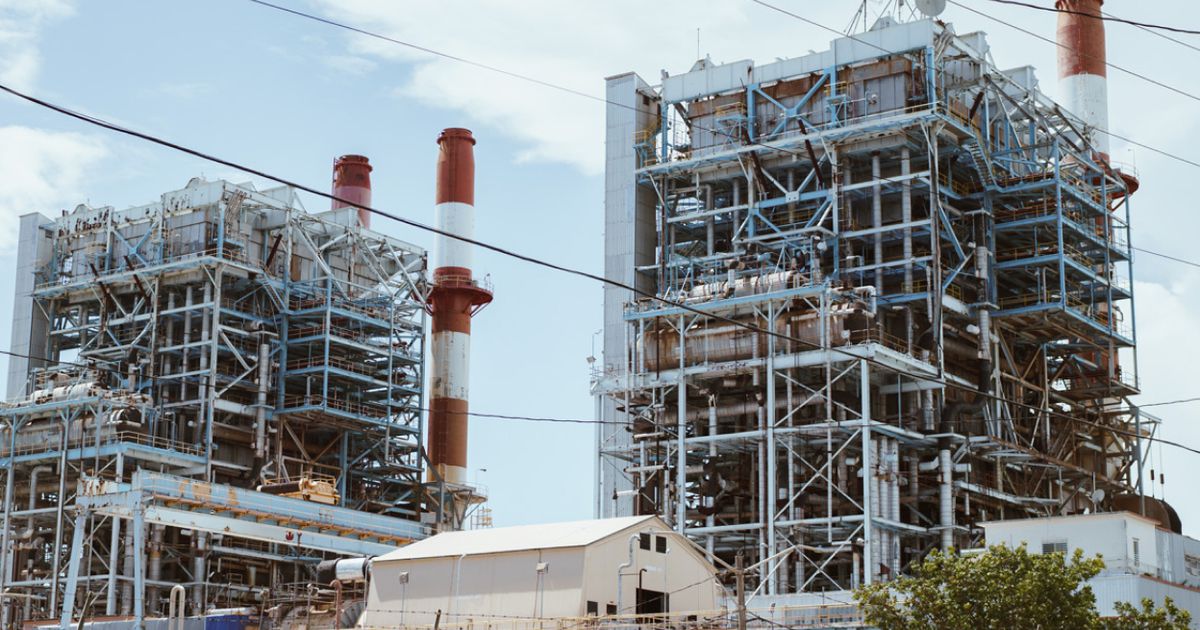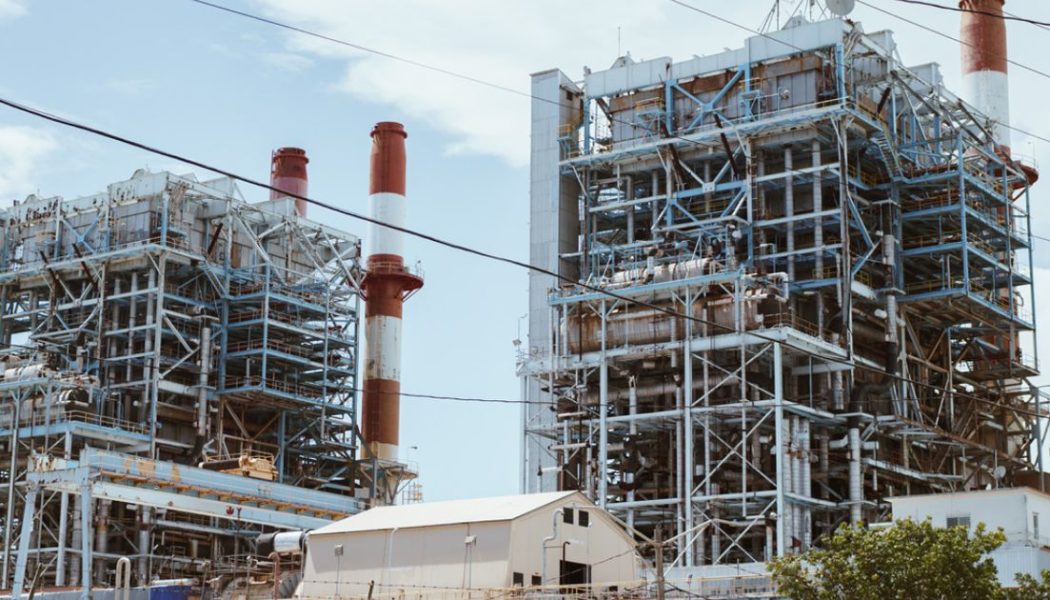
Bad Bunny has made a practice of yelling “fuck Luma” at concerts — a reference to the private firm that currently manages Puerto Rico’s grid. The biggest rapper in the world is regularly protesting a power company.
But the issue is decided in a more mundane arena. Housed in a curved concrete tower in downtown San Juan, the Puerto Rico Energy Bureau was created in 2014 to regulate PREPA. Puerto Rico’s equivalent of a state utility commission, the bureau vets proposed investments in the grid, which means that, among its many other responsibilities, it’s the entity that checks whether projects comply with Puerto Rico’s renewable goals before they are passed on to FEMA.
This has proven challenging. For nearly a century, PREPA had sole dominion over Puerto Rico’s energy system. The state-owned, vertically integrated monopoly electrified the island with oil-burning power plants and mountain-spanning transmission lines, playing a major role in Puerto Rico’s industrialization. But with the majority of its board and hundreds of senior staff appointed by the governor, it became captured by whichever political party was in charge, according to officials and the independent investigation into its debt.
The utility subsidized rates by borrowing aggressively and forgoing grid upgrades, sometimes lowering electricity prices before elections at the request of governors. Basic maintenance went undone. The result was a utility $9 billion in debt and an electric system vulnerable at every level: dependent on precarious transmission lines to carry power from antiquated power plants in the south to the population center in the north, threatened by untrimmed foliage and comprised of ancient components prone to failure even on clear days.
The same post-Maria legislation that set Puerto Rico’s renewable targets cleaved PREPA in two, separating generation from distribution and starting the process of contracting the operation of each half out to private companies. (Because federal aid can’t go to for-profit companies, PREPA would retain ownership of the assets.) After several larger and more established contenders dropped out of the bidding process, Luma, a consortium between Houston-based Quanta Services and Canadian-based ATCO, was brought in last year to operate the grid. The deal was criticized for lacking oversight or protections for PREPA’s unionized workers, many of whom protested the takeover and didn’t sign on with Luma.
This is the tangle of forces over which the bureau presides: a hollowed out but politically entrenched mid-bankruptcy utility with a tense relationship with a new grid operator struggling to manage a dilapidated system; renewable advocates and solar companies that want to see the grid transformed, as policy mandates; gas companies that have long eyed the island as an untapped future market; and 3 million people furious about poor service and high rates.
“It’s a power thing. They want to keep their monopoly over 100 percent of the energy on the island.”
After Maria, these groups squared off before the bureau during a process known as integrated resource planning, where utilities outline their future investments and commissions check whether they meet energy needs and policy goals for the lowest cost. PREPA’s initial proposal was to build new gas plants, but local activists with support from larger environmental groups successfully lobbied for a plan that mandated the utility purchase renewables and phase out fossil fuels.
But PREPA proceeded to pursue gas anyway. Before the integrated resource plan was approved, the utility struck a $1.5 billion deal with the company New Fortress Energy to convert a diesel plant to gas — gas that New Fortress would provide through a floating import terminal it constructed in San Juan Harbor without federal regulatory approval. The energy bureau cited PREPA for noncompliance and the Federal Energy Regulatory Commission (FERC) ordered New Fortress to apply for permits retroactively, but the infrastructure is built and running. Nor did PREPA stop pushing for gas once the resource plan was finalized. At the end of 2020, PREPA circumvented the bureau to submit a plan for gas plants to FEMA; the bureau called the plan “defiance” when it learned of it through the media, noting that it contained “$0.00 for renewable energy projects.”
PREPA’s latest argument is that it needs to spend more than $500 million in FEMA funds on new gas turbines in order to meet EPA clean air requirements and ensure “resilience” of the grid. The bureau has repeatedly rejected PREPA’s proposals, accusing the utility of “using studies and plans as collateral attacks” on the resource plan. Nevertheless, PREPA’s executive director brought the gas projects up again in his congressional testimony last month.
Meanwhile, PREPA dragged its feet on procuring the renewable generation that the resource plan mandated, only issuing the first request for proposals over a year past the deadline and after repeated reprimands from the bureau. Consequently, the first contracts were only signed this summer.
Frustrated with PREPA’s delays, the bureau seized control of the process last year and hired a contractor to handle future renewable procurements. The process appears to be moving faster since then, but PREPA’s foot-dragging tilted the scale in favor of fossil fuels. In August, the bureau told PREPA to start studying the feasibility of one of the gas plants it had long been pushing, saying that PREPA’s own slowness adding renewables to the grid may have made it necessary.
“The IRP [integrated resource plan] was such a wonderful win, but we’re seeing it get chipped away at little by little,” said Jenny Cassel, a lawyer for Earthjustice, which has been fighting the gas proposal. “This one little gas plant, what if we just prop up this other little diesel plant? What if we just throw in an LNG terminal? The more they pick away at the edges, by the time we get to the next IRP, they’re going to be like, ‘Well, we already built it, so why not keep going?’”
It’s not uncommon for utilities to resist the transition to renewables, whether because they have ties to the fossil fuel industry or out of institutional inertia and self-preservation. Distributed technologies like rooftop solar cut into their revenue while presenting novel challenges in managing the grid. With fewer lucrative fuel contracts to dole out and enormous plants to manage, it would be a very different role than the one PREPA has historically occupied.
“It’s a power thing,” said Eduardo Bhatia, former Puerto Rico Senate president. “They want to keep their monopoly over 100 percent of the energy on the island.”
PREPA did not respond to requests for comment, but Tomas Torres, who sits on PREPA’s board as the sole consumer representative, attributes PREPA’s resistance to its culture. “PREPA has always produced electricity by combustion. They don’t have expertise in renewables, not to the degree that is required to transform the system,” he said. “And they are doing nothing to find that expertise.”
PREPA may still control the generation, but it’s Luma that controls the grid, and renewable advocates worry that it, too, is rebuilding the old centralized system. A highly distributed grid would look different from a strengthened version of what Puerto Rico currently has, with fewer island-spanning transmission lines and more robust distribution networks. So far, Luma has mostly proposed refurbishing substations and rebuilding transmission lines. The company says these upgrades are needed to bring the grid to a level of basic functionality and will allow it to better integrate renewables. The company also touts the thousands of backlogged rooftop solar panels it has connected to the grid since taking over.
The faltering recovery is all the more infuriating to renewable advocates because the solution seems so obvious: solar
The direction of Luma’s restoration is hard to discern in part because it has been so slow to begin. The company only broke ground on its first FEMA-funded project this summer — replacing streetlights — and now has 13 others under construction. In an interview, Luma policy director Mario Hurtado said the processes established with FEMA in these early projects will allow future work to move faster.
What is clear is that Luma has been unable to stop the grid’s ongoing disintegration. In the year since it took over, outages have lengthened, according to the Energy Bureau, and rates have risen repeatedly. A substation fire knocked out power to the island in April, and a power plant malfunction caused another widespread outage in August. Luma blames the poor shape PREPA left the grid in and says that its focus on replacing and updating, rather than simply repairing, damaged infrastructure will result in fewer but longer outages and a sturdier grid in the long term.
It’s unclear how long Luma will have. Its contract is up for review at the end of November, and while officials and experts worry terminating it will lead to worse disruptions and no other operator willing to take its place, Luma’s image has plummeted as rates have risen and outages worsened. The rate increases may be the result of the rising cost of fuel for generation PREPA still controls, but it’s Luma’s name on the bill, Luma that was brought in to fix the grid, and onto Luma that public anger has fastened. Bad Bunny’s anti-Luma stance turned into an extended rant at a recent show before performing “El Apagón,” or “The Blackout.” The moment went viral. The August outage — dubbed “Hurricane Luma” — resulted in the fiercest protest yet calling for a reversal of the privatization. For the first time, the governor and resident commissioner joined the chorus of criticism.
The faltering recovery is all the more infuriating to renewable advocates because the solution seems so obvious: solar. It’s cheap, locally generated, dependent on neither the cross-island transmission lines that break with every storm nor the fuel supplies that get snarled when they do. Thousands of Puerto Ricans who can afford the upfront cost have put panels on their roofs for precisely these reasons. Watching the resources to transform the entire island slowly trickle out, so far mostly to patch the existing system, is enraging.
“This insistence on rebuilding the centralized grid instead of resilient energy is costing lives,” said the environmental lawyer Ruth Santiago shortly after the August blackout knocked out power to several hospitals.
For Santiago, resilience means embracing rooftop solar and battery systems, both to withstand storms and preserve scarce agricultural land. Her preferred approach is outlined in a modeling study released last year by the coalition Queremos Sol, or We Want Sun, of which she is a member. It found that a massive deployment of rooftop solar by 2035 could meet 75 percent of the island’s energy needs and cut rates roughly in half.
Santiago, who sits on the White House Environmental Justice Advisory Council, has been making the case that FEMA should step in and ensure funds are spent in ways compatible not only with Puerto Rico’s renewable target but also with federal policies. Biden issued an executive order directing federal agencies to use their full capacity to reduce carbon emissions and increase resilience to climate change, she points out, and Congress passed legislation in 2018 mandating that FEMA provide funding for rebuilding “resilient” facilities. FEMA’s own strategic plan places climate resilience as a priority.
“Ultimately, the responsibility here is with FEMA because they have the funds and FEMA decides yes or no on these projects that are submitted,” Santiago said.
Others have been making the case as well. Sen. Chuck Schumer, Reps. Raúl Grijalva and Alexandria Ocasio-Cortez, and other lawmakers have written repeatedly to FEMA urging the agency to ensure funds are spent on distributed renewable energy, as has Earthjustice on behalf of local environmental and community groups.
But FEMA isn’t built to exert this kind of control over the recovery process. Until well into the 20th century, the federal government had no official role to play in disaster response. Recovery fell to state and local governments, with Congress sending money on an ad hoc basis when necessary. Official recovery funds were set aside after World War II, and over the ensuing decades, more money and new functions like debris removal and temporary housing assistance were added, with responsibilities bouncing between the Department of Housing and Urban Development and Department of Defense until 1979, when the Federal Emergency Management Agency, or FEMA, was formed. Today, FEMA has more than 20,000 employees and manages tens of billions in disaster funds each year, but it retains key aspects of origins: state and local governments lead while FEMA, according to the Stafford Act that gives the agency its authority, “supports,” often by writing large checks from its Public Assistance fund to repair what has been damaged.
The result is a disaster recovery apparatus that is both notorious for its onerous paperwork and, in other ways, quite hands-off about how money is spent. A common catchphrase in the emergency management community is “federally supported, state managed, locally executed.” It’s an approach that does not always lend itself to climate adaptation. If a sheriff wants to spend $100 million rebuilding a prison on a sinking marsh, provided it meets FEMA’s documentation and cost-benefit requirements, there’s little FEMA can do. And if local officials do want to integrate climate adaptation into their rebuilding, it’s largely up to them to figure out how.
“We’re not energy policy experts,” said FEMA’s Puerto Rico director Jose Baquero. “We usually go by what the applicant wants to bring to the table. And as long as it’s eligible,” FEMA’s term for meeting strict cost-benefit analysis and documentation criteria, “we approve it.”
While wealthy and well-staffed governments like post-Hurricane Sandy New York can design adaptive rebuilding programs, smaller governments often struggle with the task, which is particularly challenging for a system as complex as an electric grid. The PR100 study, which Santiago also advises on, is meant to address some of these problems by using FEMA funds to pay the DOE to do the technical work. A major component of the study addresses the question of the most resilient grid design and, before that, what resilience even is.
Though Congress told FEMA to define “resilience” when it mandated it fund resilient projects, the agency has yet to finalize a regulatory definition. The definition given in its guide to climate resilience, “the ability to prepare for and adapt to changing conditions and withstand and recover rapidly from disruption,” is too broad to adjudicate between different grid designs. That could mean, as PREPA argues, building gas plants and hardening transmission lines, or it could mean a network of solar microgrids. (In an emailed statement, FEMA said it continues to work on an update incorporating the definition of resilience into regulations.) If anything, there are too many resilience metrics, and DOE is working to combine models that measure hardiness against things like wind and mudslides with models that measure how quickly service can be restored with other models that measure the impact on people when their power goes out.
While the study will bring clarity to the question of the most resilient grid, it will still just be a suggestion. The farthest FEMA will go is to say that Puerto Rico has the “flexibility” to use funds for renewables. Baquero said that agency officials have regular conversations with PREPA and Luma about how they can integrate adaptation into their work.
Much of the agency’s recent efforts to promote adaptation take this form: making funds available to those that want and have the wherewithal to apply for them. In theory, there are billions of dollars available in Puerto Rico for such projects, not just for PREPA and Luma. And after living through Maria and five years of faltering power, Puerto Ricans have a lot of ideas about what resilience means.









